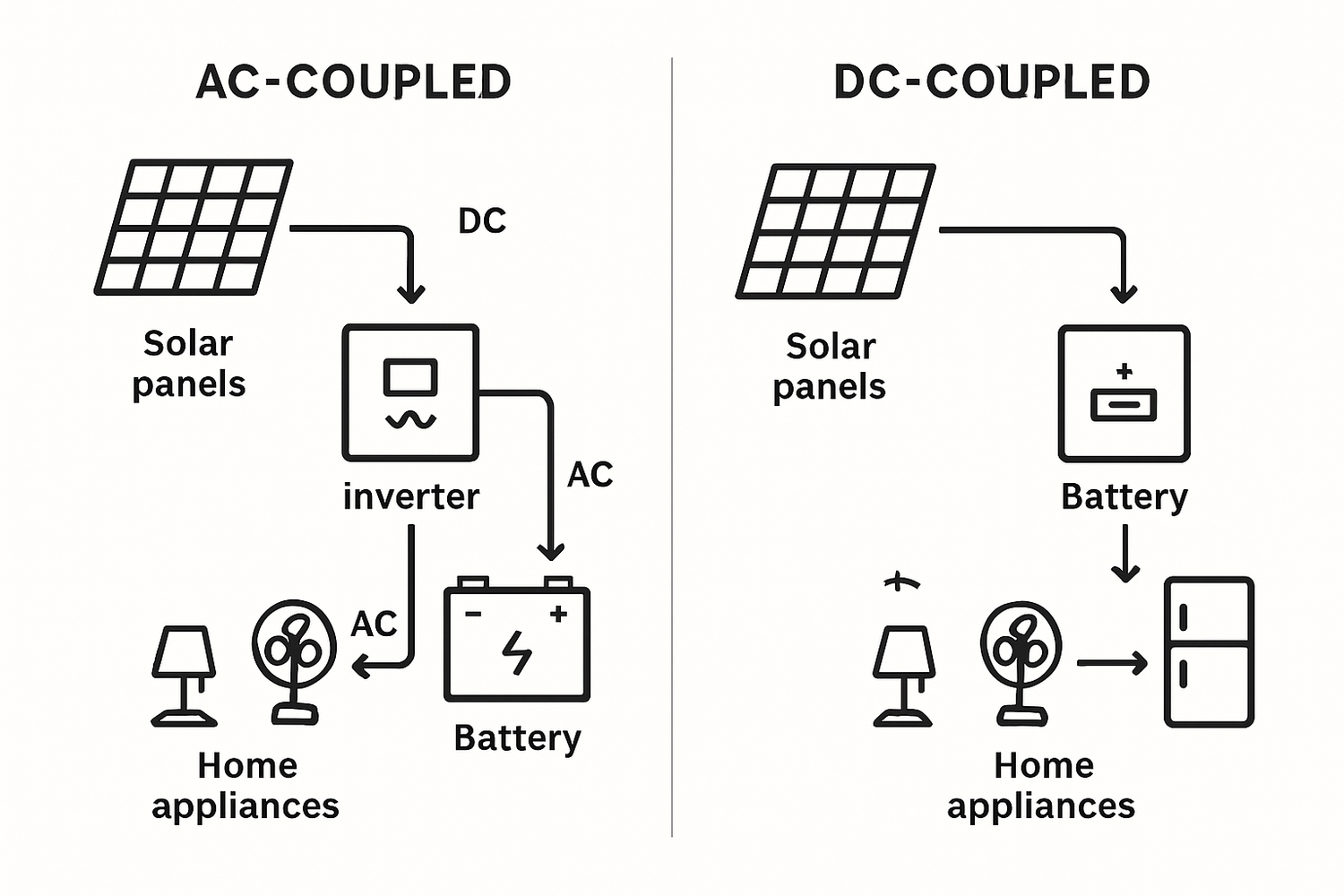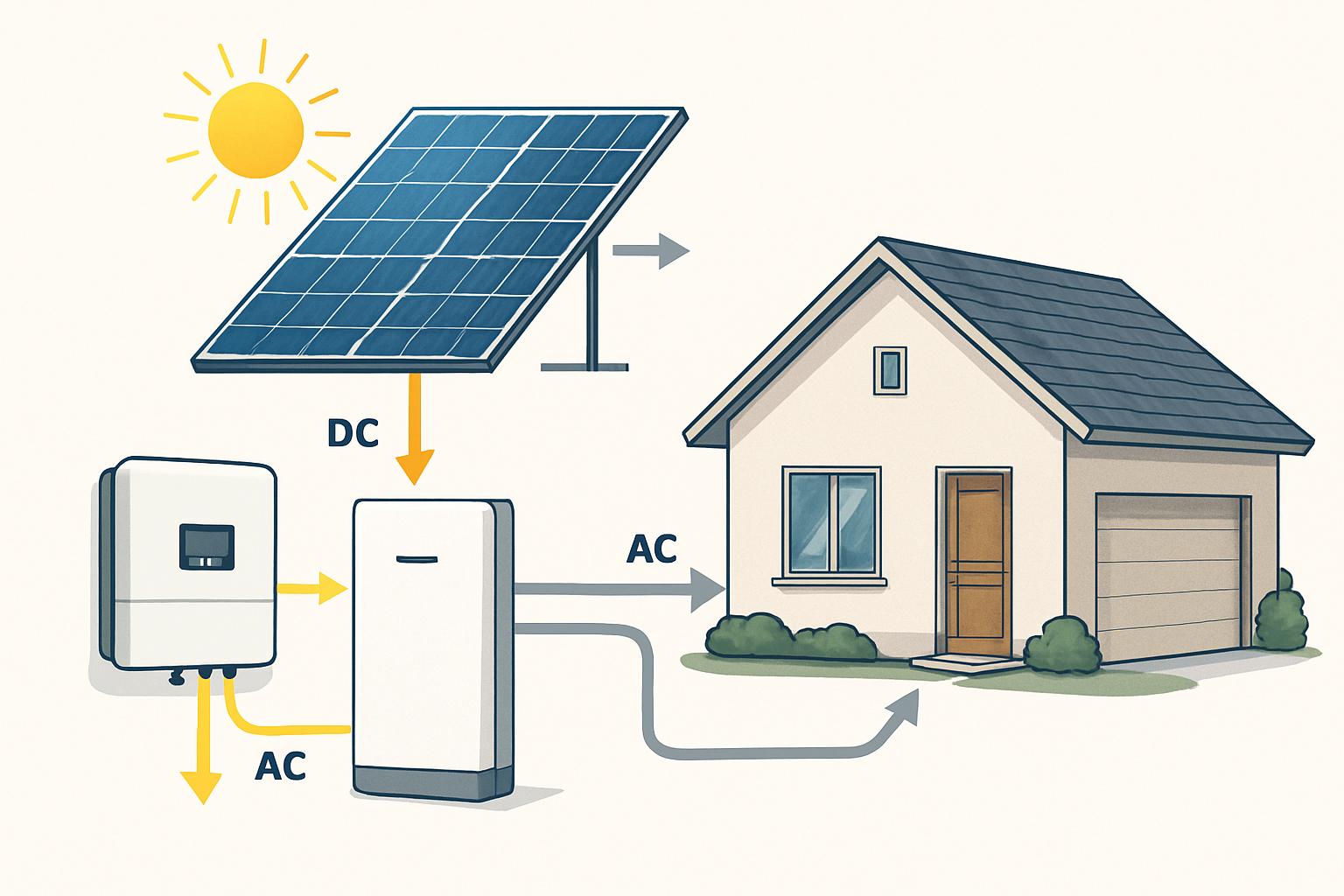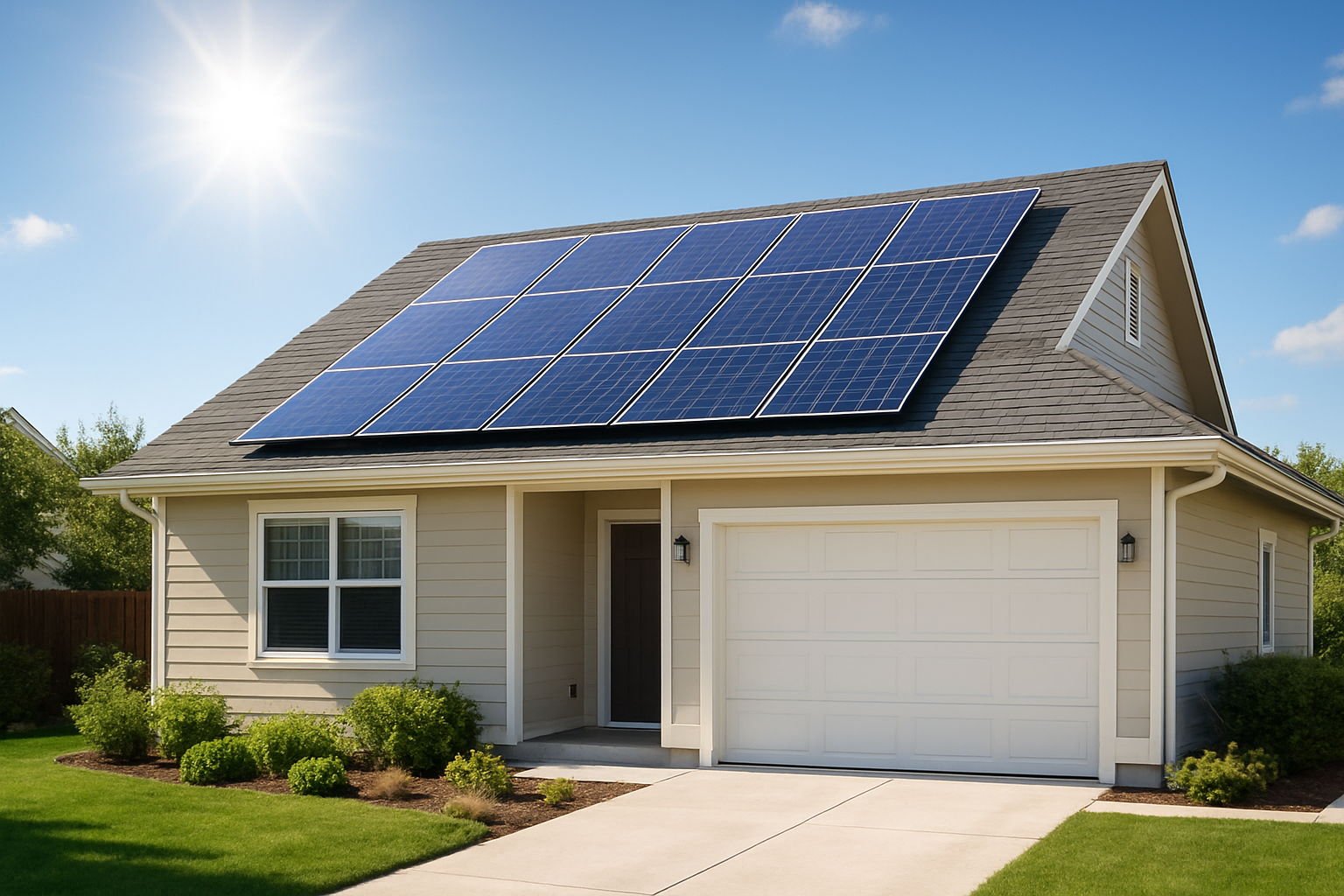Adding a battery to your solar panel system is a significant step toward energy independence. It allows you to store the excess energy your panels generate during the day for use at night or during a power outage. However, a critical decision in designing your solar-plus-storage system is how the battery connects to your solar array. This connection method, known as 'solar energy storage coupling', comes in two main architectures: AC (alternating current) coupled and DC (direct current) coupled. The choice between them impacts efficiency, cost, and installation complexity.
Understanding the Basics: AC and DC in Your Solar System
To grasp the difference between AC and DC coupling, it's important to know the roles these two types of electricity play in your home's energy system. Solar panels produce DC electricity, but your home appliances and the electrical grid operate on AC electricity.
The Role of an Inverter
The inverter is the heart of any solar installation. Its primary job is to convert the DC electricity from the solar panels into usable AC electricity for your home. Without an inverter, the power generated by your panels would be incompatible with your appliances. The key difference between AC and DC coupled systems is where the battery is placed in relation to this conversion process.
Where the Battery Connects
The fundamental distinction lies in the path the electricity takes. In a DC-coupled system, solar energy flows directly from the panels to the battery without being converted to AC first. In an AC-coupled system, the solar energy is first converted from DC to AC to power your home, and then any excess AC energy is converted back to DC to be stored in the battery.
What Is DC Coupled Solar Storage?
DC coupled systems are a streamlined and highly efficient way to store solar energy, especially for new installations. In this setup, the solar panels, charge controller, and battery all operate on the DC side of the system.
How It Works
The energy flow is direct: DC power from the solar panels is managed by a charge controller that feeds it straight into the battery. This stored DC power is only converted to AC by a hybrid inverter when your home needs to draw power from the battery. This single conversion process is a key feature. A hybrid inverter is an all-in-one device that functions as both a solar inverter and a battery inverter, simplifying the system's architecture.
Advantages of DC Coupling
The primary benefit of a DC coupled solar storage system is its high efficiency. Because the electricity is converted only once (from DC in the battery to AC for your home), less energy is lost. DC-coupled systems can achieve a round-trip efficiency of around 98%. This makes them an excellent choice for new solar-plus-storage installations and for off-grid systems where maximizing every watt of energy is crucial. They also tend to have lower equipment costs since a single hybrid inverter handles all power management.
Disadvantages of DC Coupling
The main challenge with DC coupling arises when trying to add a battery to an existing solar panel system. It often requires replacing the existing solar inverter with a more complex and expensive hybrid inverter, which can increase installation complexity and cost. Additionally, if the single hybrid inverter fails, both the solar array and the battery system may become inoperable.
What Is AC Coupled Solar Storage?
AC coupling is the most common method for adding battery storage to an existing solar installation. It essentially treats the solar array and the battery as two separate systems.
How It Works
In an AC coupled system, the DC power from the solar panels first goes to a standard solar inverter, which converts it to AC power for your home. If there is excess energy after powering your home's loads, that AC power is sent to a separate battery inverter. This second inverter converts the AC power back to DC to charge the battery. When you need to use the stored energy, the battery inverter converts it from DC back to AC.
Advantages of AC Coupling
Flexibility is the greatest strength of AC coupled solar storage. It allows you to add a battery to any existing grid-tied solar system without modifying the existing solar installation. This modularity also means that the solar panels and the battery system can operate independently. If the battery inverter were to fail, your solar panels could still supply power to your home. This design provides greater resilience and makes it easier to scale the system by adding more batteries later.
Disadvantages of AC Coupling
The main drawback is lower efficiency. The multiple conversions of power—from DC to AC, back to DC for storage, and then back to AC for use—result in energy losses at each step. The round-trip efficiency of an AC-coupled system is typically between 90-94%. While this difference may seem small, it can add up over the lifetime of the system. The need for two inverters can also increase the initial equipment cost.
Head-to-Head Comparison: AC vs. DC Coupling
Choosing the right solar energy storage coupling strategy depends on your specific circumstances. The table below summarizes the key differences to help you decide.
| Feature | AC Coupled | DC Coupled |
|---|---|---|
| Round-Trip Efficiency | Lower (90-94%) due to multiple conversions. | Higher (up to 98%) due to a single conversion. |
| Best for Retrofits | Yes, easily adds to existing solar systems. | No, typically requires replacing the existing inverter. |
| Best for New Installations | Possible, but less efficient. | Yes, highly efficient and often more cost-effective. |
| System Complexity | Simpler to install for retrofits; two separate systems. | More complex for retrofits; simpler for new all-in-one systems. |
| Cost | Can have higher equipment costs (two inverters). | Can have lower equipment costs (one hybrid inverter). |
| Resilience | Higher; solar can work if battery inverter fails. | Lower; a single point of failure can disable the whole system. |
Making the Right Choice for Your Home
The decision between an AC or DC coupled system is not about which is universally better, but which is better for your situation. The growth of solar and battery storage is a key trend, with the U.S. Energy Information Administration (EIA) forecasting that they will account for the vast majority of new electricity-generating capacity.
For New Solar Installations
If you are installing a new solar panel and battery storage system at the same time, a DC-coupled system is generally the superior choice. The higher efficiency and integrated design using a `hybrid inverter AC coupled` setup provide better performance and value from the start.
For Existing Solar Systems
If you already have a solar panel system and wish to add storage, an AC-coupled system is almost always the more practical and cost-effective option. It avoids the need for a major overhaul of your existing setup, making the installation process smoother and less disruptive.
Achieving Long-Term Performance
Regardless of the coupling method, the quality of the components is paramount. High-performance, reliable batteries, such as those using Lithium Iron Phosphate (LiFePO4) chemistry, are crucial for ensuring the safety and longevity of your energy storage solution. Understanding key metrics is vital for evaluating system performance. For a deeper analysis, you can review this ultimate reference on solar storage performance, which provides valuable data on what to look for.
Your Path to Energy Independence
Ultimately, both AC and DC coupled systems enable you to store and use your own clean solar energy, reducing your reliance on the grid and lowering your electricity bills. The best choice depends on your starting point—a new installation or an existing one. By weighing the factors of efficiency, cost, and installation complexity, you can design a solar energy storage system that perfectly aligns with your energy goals. As the International Energy Agency (IEA) notes, solar PV is central to the clean energy transition, and pairing it with storage is a powerful step forward.
Frequently Asked Questions
Can you add a DC-coupled battery to an existing AC solar system?
It is technically possible but generally not practical. It would require replacing your current solar inverter with a hybrid inverter that can manage both the solar panels and the battery. This process is more complex and often more expensive than simply adding an AC-coupled battery system, which is designed for easy retrofitting.
Which system is better for off-grid living?
DC-coupled systems are typically preferred for off-grid applications. Their higher round-trip efficiency is a significant advantage when you are completely reliant on the energy you generate and store. Every bit of energy saved is critical, and the direct DC-to-DC connection between panels and battery minimizes losses.
What is a hybrid inverter?
A hybrid inverter, sometimes called a multi-mode inverter, is an advanced device that combines the functions of a solar inverter and a battery inverter into a single unit. It can intelligently manage power from solar panels, a battery bank, and the electrical grid simultaneously. This makes it the central component in most modern DC-coupled and some AC-coupled storage systems, streamlining the entire setup.





Leave a comment
All comments are moderated before being published.
This site is protected by hCaptcha and the hCaptcha Privacy Policy and Terms of Service apply.